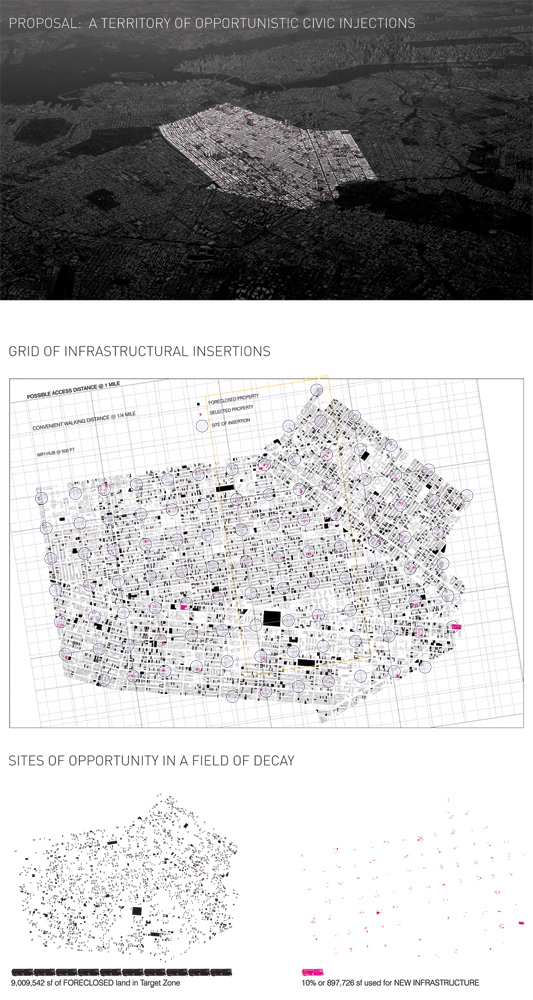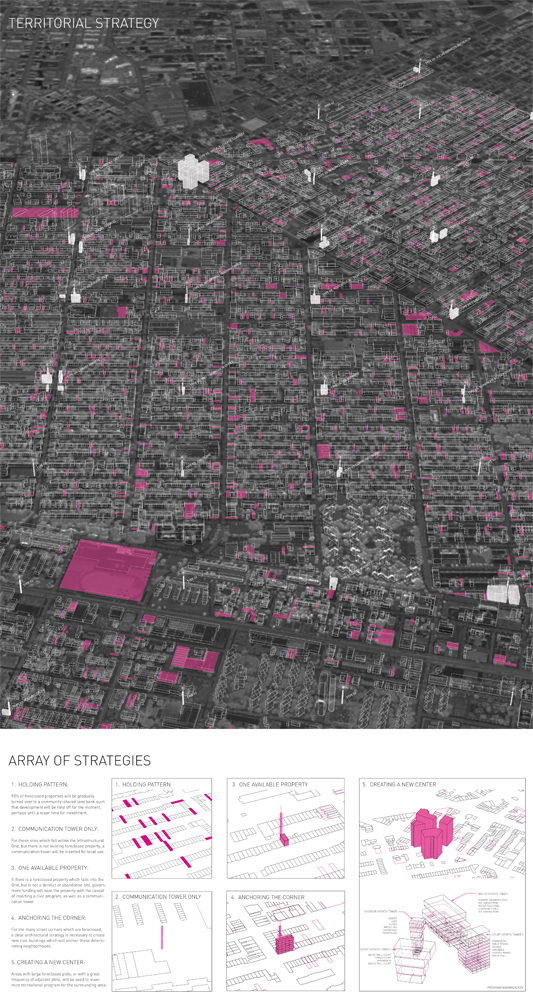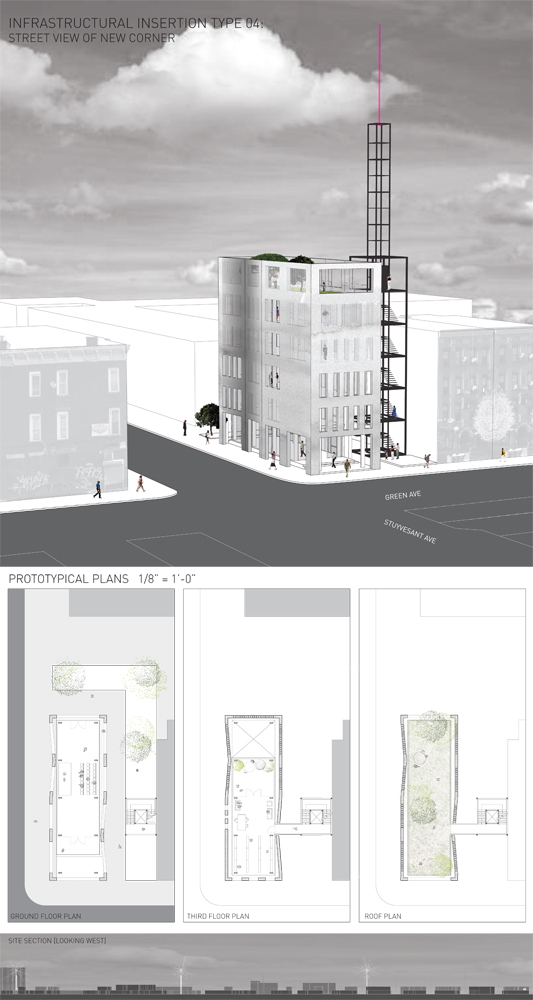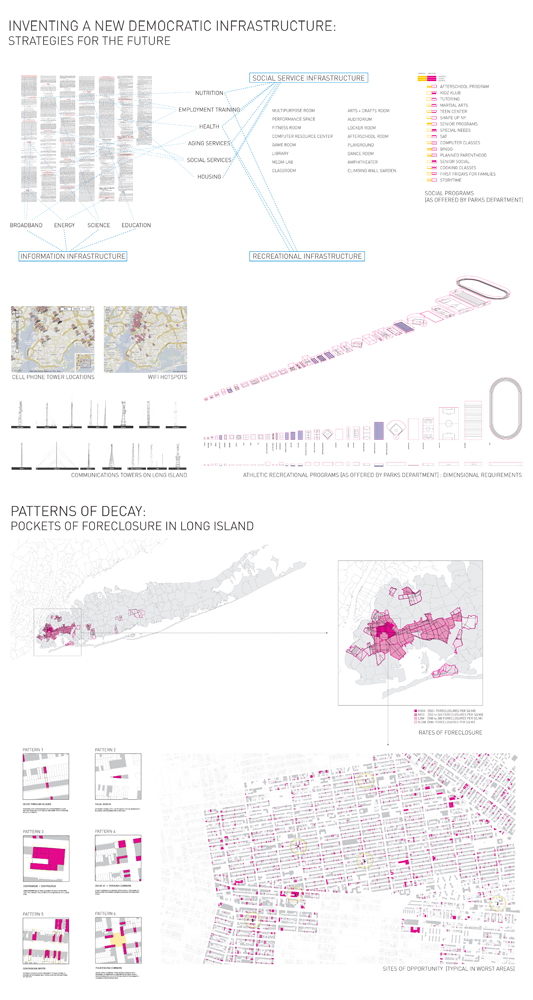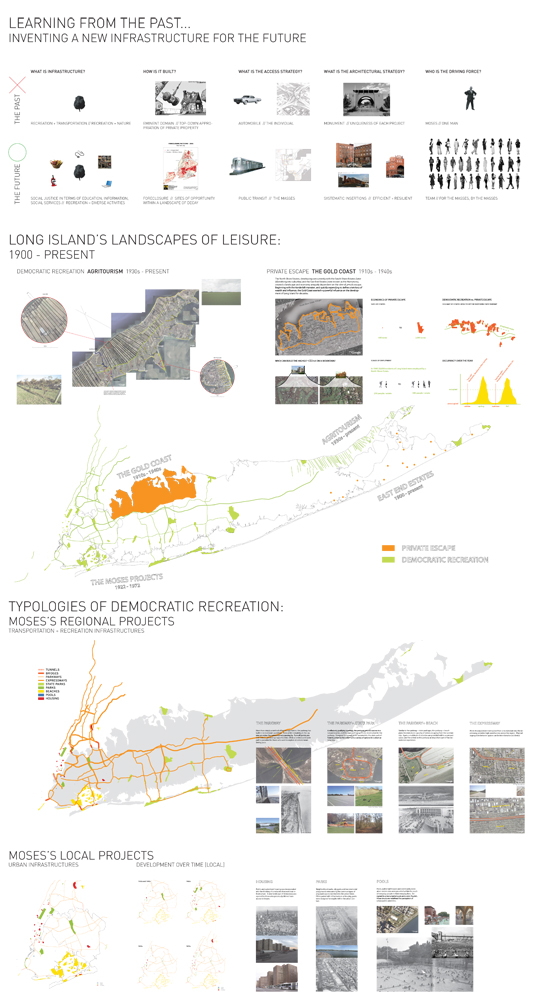Grid of Infrastructural Insertions:
Sites of Opportunity in a Field of Decay
We are investing billions in infrastructure through the stimulus bill; we must carefully reconsider what kind of investments we are making for our future. Rather than simply building more highways, bridges and tunnels as we have done in the past, we should be injecting energy into the eroding urban areas of our cities. If the key to a sustainable future is through maintaining thriving, vibrant and densely populated metropolises, we must lay this groundwork now. The current foreclosure crisis has revealed badly corroding neighborhoods. These troubled sites are the ideal opportunity for architectural insertions of a civic nature, aimed at strengthening communities from the bottom up.
Background
I began by analyzing the economic stimulus bill to extract the vital needs and concerns of today, as framed by the government. The major themes point to infrastructural investment in the form of information and communication, social services, and health and recreation. In parallel, through an investigation of the whole of Long Island, dense pockets of foreclosure were discovered around the Bedford-Stuyvesant area of Brooklyn. Characterized by a history of poverty and violence, Bed-Stuy exists in the grey area between downtown and suburbia, and was attempting a comeback as a viable place to live until the foreclosure crisis. Now, with more than 500 foreclosures per square mile, boarded up windows and gaping empty lots are threatening to take over the identity of this neighborhood.
Territorial Strategy
Thinking of foreclosed lots as sites of opportunity, I propose a multi-pronged strategy to inject a new civic infrastructure into this area. By overlaying a 1/4 mile and 1 mile walking distance grid with a 500 ft communications grid, I have selected a small subset of the available sites to create a new infrastructural network to provide access to knowledge, social services and health.
This strategy intentionally leaves 9 million square feet of foreclosed space untouched for the moment - to gradually be turned over to a community land bank - a sort of holding pattern to prevent rash development until a wiser time for investment.
For those sites which fall into the new infrastructural network, 4 types of architectural insertions are proposed.
1. If no foreclosed lot exists at a grid point, then a communications tower will be inserted as a locally managed asset which strengthens the regional network.
2. If a grid point falls upon a foreclosed property that is not derelict or abandoned, government funding will save the property with the caveat of inserting a civic program, as well as a communications tower.
3. The third type of insertion addresses the crumbling corners of the urban block. Surprisingly many corner buildings are being foreclosed - a clear architectural strategy of rethinking the urban building prototype is proposed (see third and fourth boards to the right).
4. Finally, areas with an agglomeration of many or large foreclosed plots will be used to maximize recreational program for the surrounding area. Literally all of the Park's Department's currently offered recreational facilities could be offered in one complex.
Spring 2009 graduate options studio at MIT, taught by Alexander D'Hooghe.
